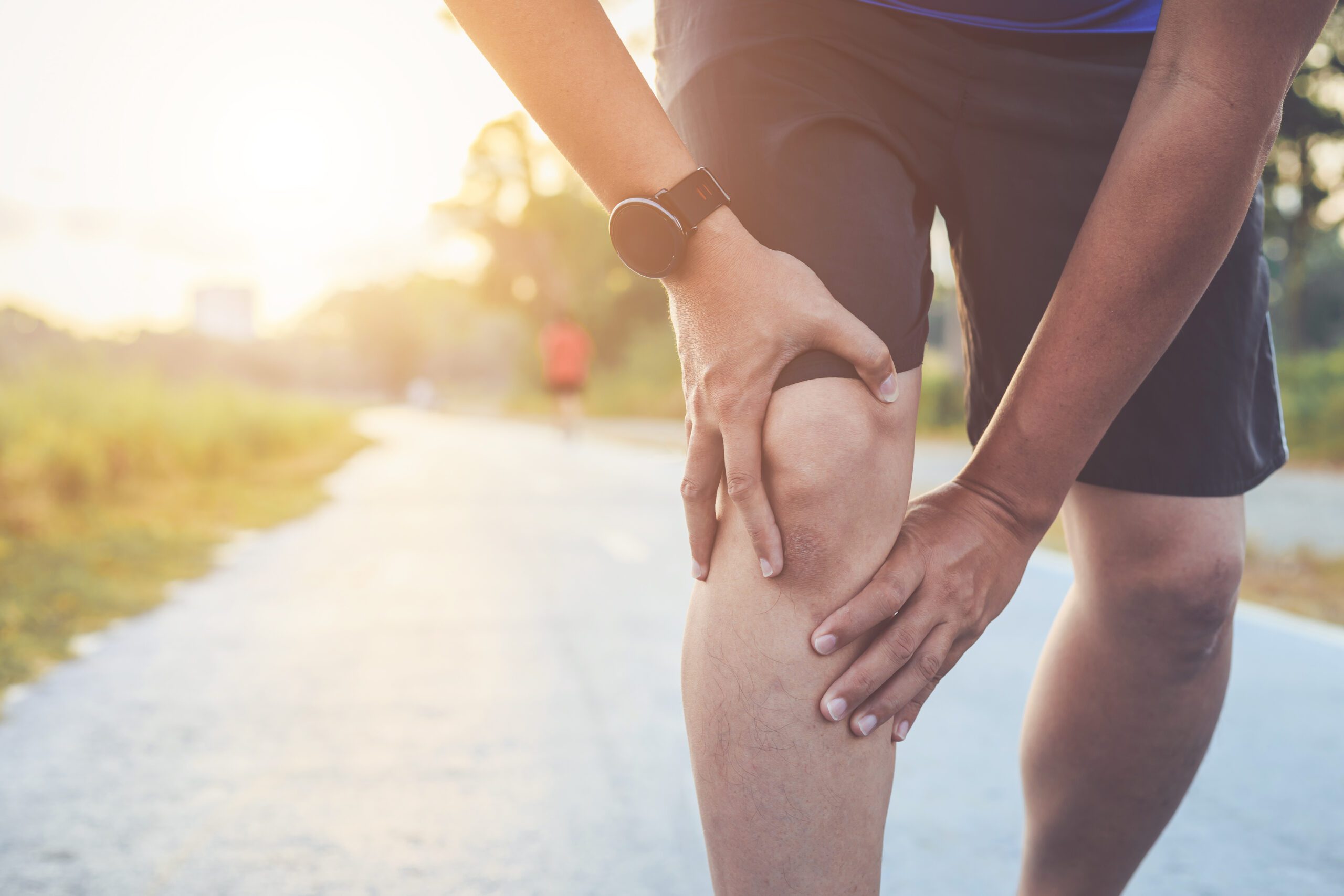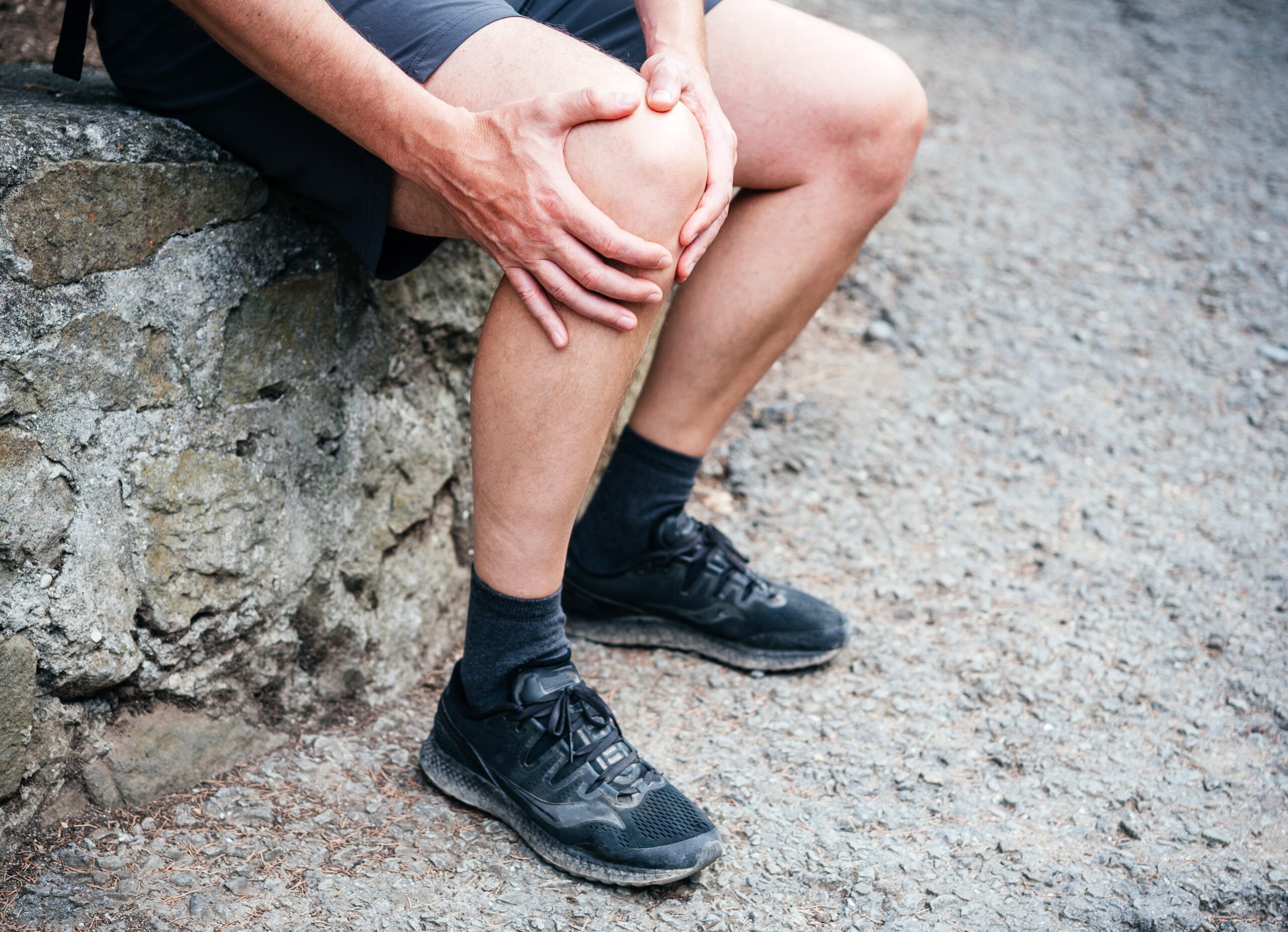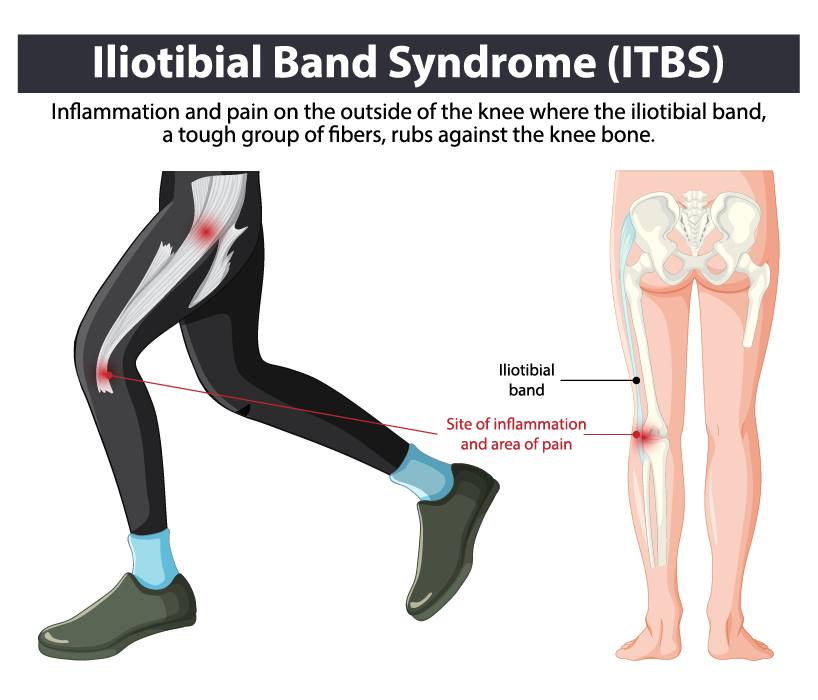
ITB Syndrome (Iliotibial Band Syndrome)
Did You Know?
Iliotibial Band Syndrome is an overuse injury.
What Is Iliotibial Band Syndrome?

Iliotibial Band Syndrome (ITBS) is a common overuse injury that affects the outer part of the knee. This is a condition that we see at our clinics often effecting runners, cyclists and athletes that engage in longer distance events. ITBS occurs when the iliotibial band, a thick band of connective tissue running down the outside of the thigh, becomes tight or inflamed. This inflammation leads to pain on the outside of the knee, especially during physical activities like running or climbing stairs. This condition often get worse the more you train and has a tendency to start coming on earlier and earlier into your session.
Anatomy of ITBS
The iliotibial band (IT band) is a long, fibrous tissue that extends from the hip to the outside of the knee/top of the shin. It starts at the hip bone, runs down the outside of the thigh, and attaches just below the knee. Its primary role is to stabilize the knee and assist with leg movements. Muscles like the gluteus maximus and tensor fascia latae connect to the IT band, which helps control the thigh’s position during movement. When the IT band is overused or irritated, it can rub against the outer knee, leading to inflammation and pain characteristic of ITBS.

Symptoms of Iliotibial Band Syndrome
The most common symptom of ITBS is sharp or burning pain on the outer side of the knee, which usually worsens during activities like running, cycling, or climbing stairs. The pain may start as mild discomfort and gradually increase, becoming more noticeable when the knee is bent at a 30-degree angle, such as when walking downhill or sitting with the knee bent for extended periods. Some people may also experience a snapping or popping sensation on the outer knee.
Causes of ITBS
ITBS is primarily caused by repetitive knee movements that lead to irritation of the IT band. Several factors can contribute to the development of ITBS, including:
- Overuse: High-impact activities like running or cycling put repeated stress on the IT band.
- Poor Training Habits: Sudden increases in activity levels, inadequate warm-ups, or training on uneven surfaces can exacerbate the condition.
- Biomechanical Issues: Poor posture, leg length discrepancies, weak hip muscles, or abnormal foot structure/posture can alter the alignment of the leg and increase stress on the IT band.
- Improper Footwear: Worn-out or inappropriate shoes lacking proper support can change your gait, leading to IT band irritation.
Treatment of Iliotibial Band Syndrome
Treatment for Iliotibial Band Syndrome
Treatment for ITBS focuses on reducing pain, inflammation, and preventing recurrence. Here are some common approaches:
Rest and Activity Modification: Reducing or temporarily stopping activities that trigger pain can help the IT band heal. Gradually return to your normal activities once the pain subsides.
3D Gait Analysis: This will allow is to assess not only to influence of the foot on the knee, but also the influence of the hip on the knee.
Appropriate Trainers: Make sure that your footwear isn’t increasing rotation at the knee. Overly soft shoes have been seen to increase stress on the IT band.
Orthotic Therapy: Custom orthotics may also be recommended if foot structure contributes to the stresses at the knee.
Ice Therapy: Applying ice to the affected area can help reduce inflammation and numb pain. Use an ice pack for 15-20 minutes several times daily.
Stretching and Strengthening Exercises: Stretching the IT band, hip flexors, and glutes can improve flexibility, while strengthening the hip and core muscles can enhance overall leg stability.
Foam Rolling: Foam rolling the IT band and surrounding muscles can relieve tightness and improve blood flow, aiding recovery.
Suffering with ITBs?
If you still have questions or concerns send us a message using the form and one of our team will get back to you.
Contact information
Official partners

